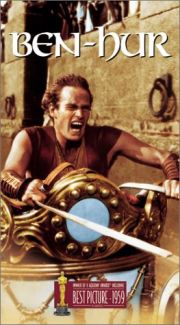
ANTH 3130 Archaeology & Society
Class notes 15 Nov 2007
Welcome back!
Plan for Class today...
Attendance sheet...
Announcements
Discussion Topics
Heritage
Destruction of Heritage (incl vid. segment on Secret Treasures of Zeugma)
Archaeology in the Movies
Homework for Today: PAPER IS DUE IN CLASS. ALSO THIS READING: Rowan & Baram Ch 11, 14, 16, 17. As you read, think about why, and by whom, some landmarks are restored, destroyed, replicated, and sold.
For Nov 22: No reading. Poster Party Day! Please be on time. Bring snacks if you like (but some will be supplied).
recalling from last week...
David Lowenthal, from his book Possessed by the Past, 1996, p xi:
"In domesticating the past we enlist it for present causes. Legends of origin and endurance, of victory or calamity, project the present back, the past forward; they align us with forebears whose virtues we share and whose vices we shun. We are apt to call such communion history, but it is actually heritage. The distinction is vital. History explores and explains pasts grown ever more opaque over time; heritage clarifies pasts so as to infuse them with present purposes.
Critics who confuse the two enterprises condemn heritage as a worthless sham, its credos as fallacious, even perverse. But heritage, no less than history, is essential to knowing and acting.... [but] Because heritage concerns are passionately partisan, they are also seamed with paradox.
Thus we mourn worlds known to be irrevocably lost -- yet more vividly felt, more lucid, more real than the murky and ambiguous present. We yearn for rooted legacies that enrich the paltry here and now with ancestral echoes, yet also encumber us with outworn relics and obsolete customs. We see what has happened as inalterable... and cleave to timeless tradition, yet we ever reshape what we inherit for current needs.... We acclaim heritage as a universal requisite, yet disdain and derogate legacies that differ or compete with our own. We avow concern for the sanctity of all heritage, yet strip it of context and debase its meaning."
Heritage (think back to If Only I Were an Indian, york vid #4138. Getting deeper into "cultural tourism", appropriation, authenticity... )
Now Consider the Article: "Repackaging the Pilgrimage: Visiting the Holy Land in Orlando"
see Kohl's comments p 297
We're working through themes of power: how is heritage used in the exercise of power?
Destruction, Suppression, Manipulation, Glorification...
But people also speak back to power... they resist. They rebuild things that have been destroyed (Buddhas, Mostar Bridge). They reclaim and disseminate previously suppressed historical knowledge (Zimbabwe)... and in so doing, they exercise power of their own.
There are many examples: indigenous peoples in post-colonial Canada, labour movements, communities in post-apartheid South Africa, descendants of enslaved peoples in the USA, and black communities in Canada and Ontario. Other examples include gendered archaeology (remembering women and children into the past).
Although archaeology has certainly contributed to some historical wrongs, it can also be used in a positive way, to help illuminate past conflicts, ensure representation of multiple views, and even to contribute to some social healing -- through the recovery and sharing of information.
But then again... reconstruction is a bit different. 'Heritage' is different from archaeology -- it's not just about information, it's about the use of the past in the present, for present aims.
And reconstruction is every bit as complex as destruction, in terms of motives and symbolism.
example: Frauenkirche in Dresden: http://en.wikipedia.org/wiki/Bombing_of_Dresden_in_World_War_II
Jason James's article (not assigned) talks about the way that Germany is writing a new national narrative through reunification and reworking symbols of the past. His bottom line (p 163): "the reproduction of cultural property deserves close scrutiny.... because it is implicated in the production of difference and identity, in the assertion of boundaries marking exclusion and inclusion, and in the maintenance of unequal power relations through boundaries of inclusion and exclusion."
Destruction
Jonathan Golden's article, "Targeting Heritage"
p 185 "In modern conflicts between ethnic, religious, and cultural groups, buildings and monuments with historic and religious value sometimes beocme the target of violent attacks. Places and monuments regarded as sacred are particularly effective as targets precisely because they embody a whole set of beliefs and ideals. Such acts, therefore, are often contrived and perceived as attacks on ideology, aesthetics, and identity. In formulating a collective reaction, there is often a tendency to condemn such acts as irrational acts of senseless violence. Understandably, attacks on symbols imbued with great meaning often draw a highly emotive response, yet when these acts are relegated to the level of the irrational, we can lose valuable lessons. Just as the founding of temples and monuments is infused with meaning, their destruction is also symbolically charged."
Some key points:
Iconoclasm has been common throughout history, and still is - because heritage is so important in modern political identities
Destruction of heritage is powerful
There are legal conventions against it, but not always obeyed
Destruction and looting often go hand in hand
DESTRUCTION OF HERITAGE
Akhenaten The Heretic and his Wife Nefertiti


Bamiyan Buddhas, Afghanistan: 400 AD – March 2001 ... RIP?




Ayodhya/Babri Masjid

Hindu nationalists demolish the Babri Masjid mosque in Ayodhya on December 6, 1992






Ayodhya Chronology
“1528: Mosque built on the Ayodhya site. However some Hindus believe the site is the birthplace of one of their religion's most revered figures, Lord Rama.
1853: First recorded religious violence in Ayodhya. Six years later, British officials fenced off the inner court of the mosque for use by Muslims, allowing Hindus access to the outer court.
1949: Continuing wrangling prompts Indian Government to close the site and proclaim it a disputed area.
1984: Hindus form a committee to "liberate" what they say is the birthplace of Lord Rama, spearheaded by the Vishwa Hindu Parishad party (VHP).
1986: The VHP places a symbolic pillar on the site for a proposed new temple.
1986 - 89: Tensions rise over the future of the site. Muslims set up the Babri Mosque Action Committee. High level negotiations fail to resolve the issue.
1992: Mosque torn down by supporters of the VHP, the Shiv Sena party and the BJP party, which came to power in Uttar Pradesh state a year earlier. More than 2,000 people killed in nationwide religious rioting.
1994: Land comprising site is taken over by the Indian Government.”
2001: Tensions rise on the anniversary of the demolition of the mosque. VHP pledges again to build Hindu temple at the site.
Feb 2002: VHP confirms deadline of 15 March to begin construction. Hundreds of volunteers converge on site. Muslims torch a train, killing 55 Hindu activists returning from Ayodhya. In retaliation, Hindus rampage through Ahmedabad, killing Muslims and destroying homes and businesses. Over 2 000 are dead, and the military has to be sent in to quell the violence.
April 2002: UK report suggests riots were partly organized as ethnic cleansing by the state.
Then… spring 2003…. archaeologists involved once more….
Quoted and summarized from:
news.bbc.co.uk/.../south_asia/newsid_1870000/1870684.stm and other BBC stories.

The Ziggurat of Ur (Sumerian, ca. 4000 BCE)
“One of the greatest wonders of civilisation, and probably the world's most ancient structure - the Sumerian city of Ur in southern Iraq - has been vandalised by American soldiers and airmen, according to aid workers in the area.
They claim that US forces have spray-painted the remains with graffiti and stolen kiln-baked bricks made millennia ago. As a result, the US military has put the archaeological treasure… off-limits to its own troops.
… The Pentagon has elected to build its massive and potentially permanent base right alongside the site, so that the view from the peak of the ziggurat - more or less unchanged for 6,000 years - will be radically altered.
… There are reports that walls have been damaged by spray-painted graffiti, mostly patriotic or other slogans, and regimental mottos. One graffiti reads: 'SEMPER FE' [sic] – Always Faithful - the motto of the Marines, who stormed through this region on their way to Baghdad, and form a contingent at the base.”
Ed Vulliamy, Troops 'vandalise' ancient city of Ur, Sunday May 18, 2003 The Observer
http://observer.co.uk/international/story/0,6903,958429,00.html
New Story obtained from, and Image Borrowed from:
http://www.underreported.com/modules.php?op=modload&name=News&file=article&sid=1010
Using and Abusing The Past in the Present
Great Zimbabwe: http://www.archaeology.org/9807/abstracts/africa.html
Bettina Arnold, the Past as Propaganda: http://web.isp.cz/jcrane/Identity/Past_as_Propaganda.html
BBC: When archaeology gets bent: http://news.bbc.co.uk/1/hi/sci/tech/3372117.stm
Spoils of War: The Antiquities Trade and the
Looting of Iraq by Gregory Elich
http://globalresearch.ca/articles/ELI401A.html
Ayodhya/Babri Masjid: Archaeology at the Heart of a Political Confrontation. Current Anthropology, volume 45 (2004), page 239
If you want more on... The Social Life of Artifacts: Buried, Bought, Sold, Stolen, Traded, Faked, Reclaimed, Returned...
The Red List of Heritage in Danger:
http://icom.museum/redlist/index.html
Looting and selling
Stealing History:
www.mcdonald.cam.ac.uk/IARC/Display/Interactive.htm
Karen Olsen Bruhns:
www.saa.org/publications/SAAbulletin/18-2/saa11.html
Ebay, Antiquities section:
http://antiques.listings.ebay.com/Antiquities_W0QQfromZR4QQsacategoryZ37903QQsocmdZListingItemList
NB I am,
as you surely realize, NOT endorsing the sale of artifacts online; I
merely want to draw your attention to it as a problem.
Case: The Axum Obelisk
Feb
2004:
http://news.bbc.co.uk/2/hi/africa/3463667.stm. June 2001:
http://news.bbc.co.uk/2/hi/africa/1402354.stm. May 1998:
www.archaeology.org/magazine.php?page=online/news/axum
Case: Fake Snake Goddesses
www.archaeology.org/magazine.php?page=online/interviews/lapatin
Case: Repatriation from the Smithsonian
Institution
www.nmnh.si.edu/anthro/repatriation/page1.htm
ON TO... MOVIES AND REPRESENTATIONS OF CIVILIZATIONS
Ben Hur.... source of
images about Roman galley slaves...



James, Simon. 2001. “The Roman galley slave: Ben-Hur and the birth of a factoid.” Public Archaeology 2:35-49.
The “motif of the Roman galley slave”, chained to an oar while rowing a warship, is a common stereotype about the Roman era, widely believed by the public and even by academic classicists (James 2001:17). There is, however, nothing in the ancient Roman literature to support the notion, and quite a lot that contradicts it, saying that this task was performed by free men. James traces the popular origin of the motif to the immensely popular book and film, Ben-Hur (1880, 1925, 1959; also stage production in early C20). The author, Wallace, although being as historically accurate as possible in many other respects, seems to have deliberately created a fiction here. (There were galley slaves much later, used in the post-medieval period in the kingdoms of France, Italy, and Spain.) The popularity of the work – it was “the best-selling US novel of the 19th century in the USA” (James 2001:44) owed a great deal to its Christian message at its centre.
Significance: Vivid ‘reconstructions’ presented by the popular media can be immensely influential in shaping modern understandings of bygone eras and societies.
Thinking point: Now, with the advent of computer-generated imagery, it is getting easier and easier to create vivid, realistic-appearing images of past places and societies. (The cost of the massive movie sets for Ben-Hur was so excessive that not many films like that could be made; while CGI is expensive too, it is getting to be less so.)
GLADIATOR

A digital reconstruction of the Coliseum from the film Gladiator... populated with digital extras.
Want to see the real thing as
it is today? Rather nice online ‘walking tour’ of the Colosseum here:
http://www.deadromans.com/walk/default.htm

Above: Colosseum Exterior Below: Colosseum Interior

images
borrowed from: http://harpy.uccs.edu/roman/html/colosseumslides.html

THE SIGNIFICANCE OF GLADIATOR FOR ARCHAEOLOGY of ROME?
Profit in USA: Reported to be second only to Mission Impossible 2 in the summer of 2000. “Gladiator surprisingly held strong making a $79 million profit despite it being a rated R period piece.” (Gross: $182.9 million) http://www.thefilmcritiquer.com/the_film_critiquer/Summer2000/FinalSummerReportPart1.htm
Gladiator movie artifacts on display
“Weaponry and Armour from the film "Gladiator"
This display opens in conjunction with the first day of the
month-long Saturday film series, Ecco Roma, Città Eterna: A
Cinematic Journey of Discovery. As a tribute to "the
'Gladiator' effect" and the enormous impact the film Gladiator has
had in redefining the classical world in modern popular culture,
UPM presents FOR A LIMITED TIME ONLY a special display
of weaponry and armour created for that film. These original
props include a collection of gladiatorial equipment from the
provincial arena scenes (shield, axe, flail, mace and swords, and
helmet) and from the opening battle scenes between Romans and
barbarians (such as a legionary cuirass, helmet, belt, sword, and
special effects retractable dagger). A larger display of costumes
and weaponry from the movie, and the sword used by Russell
Crowe in the Colosseum scenes, is planned to coincide with the
opening of "Worlds Intertwined: Etruscans, Greeks, and Romans"
on March 16, 2003.”
http://www.museum.upenn.edu/Worlds_Intertwined/year.html
Gladiator and tourism
COPY FROM A WEBSITE... www.vinorossotours.com/privategladiatortour.htm
“"We who are about to die salute you" - The Gladiator Trail
Ludus Magnus Gladiatores, Colosseum.
Duration: 2 hours
As you can imagine, the film "Gladiator" has made this our most popular tour. The Colosseum and the gladiators are the reason most people come to Rome in the first place, but how much was fact and how much was fiction. How skilled was Commodus, the famous gladiator-emperor? How bloody was the combat? Were all gladiators as sexy as Kirk Douglas or Russel Crowe? As always the truth is stranger than you can imagine. We take you to the Ludus Magnus - the gladiator training barracks - and on a comprehensive tour of the Colosseum itself. This whole area of Roman history was the reason we started doing tours in the first place, so you can expect something special.
AND... WANT TO 'BE' A GLADIATOR?
From: www.startribune.com/stories/1611/3399898.html
“… the walking tourist attractions are the tip of a spike in interest in imperial Rome stimulated by the Hollywood mega-production "Gladiator." The government mounted an exhibit of gladiator armor at the Colosseum and a hitherto obscure school for weekend gladiators along the Appian Way reported an interest in membership and inquiries from abroad….
The Historical Group … founded the Rome Gladiator School, which makes its own costumes and armor, guided by mosaics and ancient written descriptions. After the "Gladiator" film debuted here two years ago, membership increased from a couple of dozen to more than 100, and the
school's Web site started receiving inquiries from all over. It costs about $180 for a three-day how-to course, costumes and lunch included. There are rules -- no hitting on the head -- but three strikes elsewhere on your opponent and he or she is out.”
Colosseum privatization
Italy to privatise Colosseum and Pompeii's ruins By Julian Coman, Europe Correspondent
(Filed: 11/11/2001)
THE Colosseum in Rome and the ruins of Pompeii are among famous Italian museums and national monuments to be privatised next year under plans to end neglect, indifferent service to the public and inefficient bureaucracy. The transfer of the monuments into private hands has been approved by Silvio Berlusconi, the Italian prime minister, and will be voted into law by the end of this month.
Companies and businesses will be offered a five-year contract to run the sites in exchange for
donating a proportion of their profits to the state. No Italian state treasure has ever before been
marketed to generate private profit.
http://www.telegraph.co.uk/news/main.jhtml?xml=/news/2001/11/11/wital11.xml
Gladiator and the antiquities trade?
“ Want to own a coin, artifact, or weapon from the time of Gladiator? It's probably less expensive than you think! CLICK HERE”
From http://www.exovedate.com/the_real_gladiator.html a while ago...
ON TO... REPRESENTATIONS OF ARCHAEOLOGY


Lara Croft: Tomb Raider
2001. Paramount. Starring Angelina Jolie. Based on video game by Eidos.

Archaeology
Archaeological sites (Angkor Wat) used as sets in the film, also reconstructed/fabricated ‘ancient’ sets with abundant clichés.
In the video games: archaeological settings, prized artifacts, and big, big… guns.

Gender: It was initially suggested by an optimistic few that it was a rather nice thing that this tomb raider / ‘archaeologist’ was female – after all, the stereotypical archaeologist is generally male.
However, if we actually consider the gaze and the target demographic for these video games and films… well, perhaps Lara Croft is not exactly intended, or received, as an, um, upstanding role model for young women with an interest in ancient history.
e.g. http://news.bbc.co.uk/2/hi/science/nature/299040.stm
Tourism, tourism, tourism:
Sequel: “Cradle of Life” shooting in Wales and Kenya.
“Angelina Jolie and her entourage have concluded shooting scenes for The Cradle Of Life: Tomb Raider 2 in six locations in and around Snowdonia, a region of North Wales, a spokesman for the production confirmed to the Daily Post today. Welsh Culture Minister Jenny Randerson thanked the 27-year-old Oscar-winner for her visit and promised further assembly backing for the film industry. "Film productions like this not only benefit the local economy, but also have longer term benefits that derive from Wales being seen on cinema and television screens all over the world," Mrs Randerson said….
The North Wales Film Commission said economic benefits had been brought to the region as a result of Jolie's sharp-shooting videogame character. "Producers used 60 local companies and services - including caterers, hoteliers, and restaurateurs - injecting money into the economy. The Assembly government will be looking to provide further support through the establishment of a Film Fund for Wales, which will contribute to the growth of the film sector in Wales.”
http://www.tombraiderchronicles.com/headlines1207.html